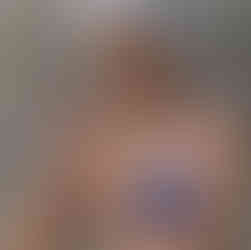- 2 dic 2023
- Tempo di lettura: 2 min
Aggiornamento: 6 dic 2023

Ara Starck at Made in Cloister
Mostra, attività e altre novità
È affascinante scoprire il lavoro tra l'artista Ara Starck e gli artigiani per la realizzazione della grande opera ruotante in vetro cattedrale.
Vieni a trovarci dal mercoledì alla domenica, saremo felici di raccontarti come è nato questo progetto e come artista e artigiani si sono divertiti a creare insieme l'installazione.

UNESCO a Napoli
Made in Cloister come esempio di rigenerazione del patrimonio culturale
UNESCO sceglie Made in Cloister durante il programma “Cultural Heritage in the 21st century”, un esempio di recupero e valorizzazione del patrimonio materiale e immateriale attraverso l'arte e la valorizzazione dell'artigianato. Davide De Blasio ha accolto la direttrice dell’UNESCO Audrey Azoulay con il Ministro della cultura Gennaro Sangiuliano e il Sindaco di Napoli Gaetano Manfredi.

Aperti anche a pranzo
Vieni a provare al Refettorio le deliziose zuppe della chef Sabrina Russo
C'è una gustosa novità da Made in Cloister.
Se passeggi per il centro storico di Napoli e hai voglia di un pranzo delizioso e veloce, passa da Made in Cloister.
Dal 7 dicembre il Refettorio è aperto anche a pranzo tutti i giovedì, venerdì e sabato, dalle 13 alle 16. Calde zuppe e insalate fresche con ingredienti di stagione sono perfette per arricchire la tua visita a Porta Capuana.
Per info e prenotazioni scrivici qui

Da Zagabria a Napoli
Il collettivo di performers Škvadra in Fondazione Made in Cloister
In residenza a Napoli le performers del collettivo croato Škvadra - Ema Crnić, Gendis Putri Kartini e Margareta Firinger - per Queering the Myth, un progetto di ricerca internazionale in collaborazione con l'associazione Domino e l'organizzazione napoletana Collettivo Zero.
Le artiste hanno esplorato la relazione tra corpo e spazio attraverso le potenzialità della danza e della coreografia. La loro ricerca è iniziata in Fondazione Made in Cloister, tra Rinascimento e architettura industriale del Chiostro e dello spazio LAB.oratorio, e si è conclusa con una performance nei porticati di piazza del Plebiscito.
Il programma è stato sostenuto dall'Ufficio per la cultura e la società civile della Città di Zagabria, dal Ministero della cultura e dei media della Repubblica di Croazia e dalla Fondazione Kultura Nova.























